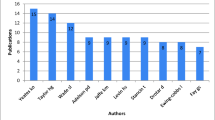Abstract
Background
The goal of the present study was to analyze the epidemiology and specific risk factors of traumatic brain injury (TBI) in the Asterix illustrated comic books. Among the illustrated literature, TBI is a predominating injury pattern.
Methods
A retrospective analysis of TBI in all 34 Asterix comic books was performed by examining the initial neurological status and signs of TBI. Clinical data were correlated to information regarding the trauma mechanism, the sociocultural background of victims and offenders, and the circumstances of the traumata, to identify specific risk factors.
Results
Seven hundred and four TBIs were identified. The majority of persons involved were adult and male. The major cause of trauma was assault (98.8%). Traumata were classified to be severe in over 50% (GCS 3–8). Different neurological deficits and signs of basal skull fractures were identified. Although over half of head-injury victims had a severe initial impairment of consciousness, no case of death or permanent neurological deficit was found. The largest group of head-injured characters was constituted by Romans (63.9%), while Gauls caused nearly 90% of the TBIs. A helmet had been worn by 70.5% of victims but had been lost in the vast majority of cases (87.7%). In 83% of cases, TBIs were caused under the influence of a doping agent called “the magic potion”.
Conclusions
Although over half of patients had an initially severe impairment of consciousness after TBI, no permanent deficit could be found. Roman nationality, hypoglossal paresis, lost helmet, and ingestion of the magic potion were significantly correlated with severe initial impairment of consciousness (p ≤ 0.05).

Similar content being viewed by others
References
Bruns J Jr, Hauser WA (2003) The epidemiology of traumatic brain injury: a review. Epilepsia 44(Suppl 10):2–10
Summers CR, Ivins B, Schwab KA (2009) Traumatic brain injury in the United States: an epidemiologic overview. Mt Sinai J Med 76(2):105–110
Langlois JA, Rutland-Brown W, Wald MM (2006) The epidemiology and impact of traumatic brain injury: a brief overview. J Head Trauma Rehabil 21(5):375–378
Leon-Carrion J, Dominguez-Morales MR, Martin JM, Murillo-Cabezas F (2005) Epidemiology of traumatic brain injury and subarachnoid hemorrhage. Pituitary 8(3–4):197–202
Sanchez GM, Burridge AL (2007) Decision making in head injury management in the Edwin Smith Papyrus. Neurosurg Focus 23(1):E5
Wilkins RH (1964) Neurosurgical classic. XVII. J Neurosurg 21:240–244
Rose FC (1997) The history of head injuries: an overview. J Hist Neurosci 6(2):154–180
Kanz F, Grossschmidt K (2006) Head injuries of Roman gladiators. Forensic Sci Int 160(2–3):207–216
Cusimano MD, Kwok J (2010) The effectiveness of helmet wear in skiers and snowboarders: a systematic review. Br J Sports Med 44(11):781–786
Liu BC, Ivers R, Norton R, Boufous S, Blows S, Lo SK (2008) Helmets for preventing injury in motorcycle riders. Cochrane Database Syst Rev (1):CD004333
Lenartz D, Dott U, Menzel J, Schierholz JM, Beuth J (2000) Survival of glioma patients after complementary treatment with galactoside-specific lectin from mistletoe. Anticancer Res 20(3B):2073–2076
Competing interest
None declared
Conflicts of interest
None.
Author information
Authors and Affiliations
Corresponding author
Additional information
Comment
This manuscript relates to a very important—and unifying—issue in European history and socialization: the lecture of the Asterix comics. In addition to all sociocultural background information, be it on rites or on phenotypes of the involved tribes, which is provided with each of the journeys and with the endeavors of our heroes—being with them had always meant to be standing on the good side. And fighting against pretension of hegemony by the bad guys—be it on land or on water—has never been illustrated in a more decent, ironical, and sometimes hilarious manner. Most interestingly, according to the analysis provided by this paper, it was not that dangerous either, given the low rate of serious injuries, which were sustained by the Romans mainly. The role of helmet protection has been stressed by the authors, especially in view of the fact that strap-fixation should have been taken more seriously by the Roman besiegers and others. It would be interesting to compare the results from this comprehensive review of reported head injuries in all Asterix volumes with those of more recent heroes such as the Ducks or the Pink Panther and others, and to look at it with a possible transatlantic perspective. As this will have to wait, we are all reminded to keep our straps tightly fastened when reviving our own ever-adolescent endeavors from biking and down-hill skiing to football playing and others, as we have to acknowledge that head injury with all its potential sequels is amongst the greatest threats we have to be aware of nowadays, and children must be taught accordingly. Furthermore, and we must admit in all humility that traumatic brain injury is one of the fields of our specialty with ever-lasting importance and even rising numbers, a fact which should be considered when allocating manpower and funds for research. Meanwhile, the authors are to be commended for having undertaken this stimulating analysis.
Karl Schaller
Geneva, Switzerland
Rights and permissions
About this article
Cite this article
Kamp, M.A., Slotty, P., Sarikaya-Seiwert, S. et al. Traumatic brain injuries in illustrated literature: experience from a series of over 700 head injuries in the Asterix comic books. Acta Neurochir 153, 1351–1355 (2011). https://doi.org/10.1007/s00701-011-0993-6
Received:
Accepted:
Published:
Issue Date:
DOI: https://doi.org/10.1007/s00701-011-0993-6




